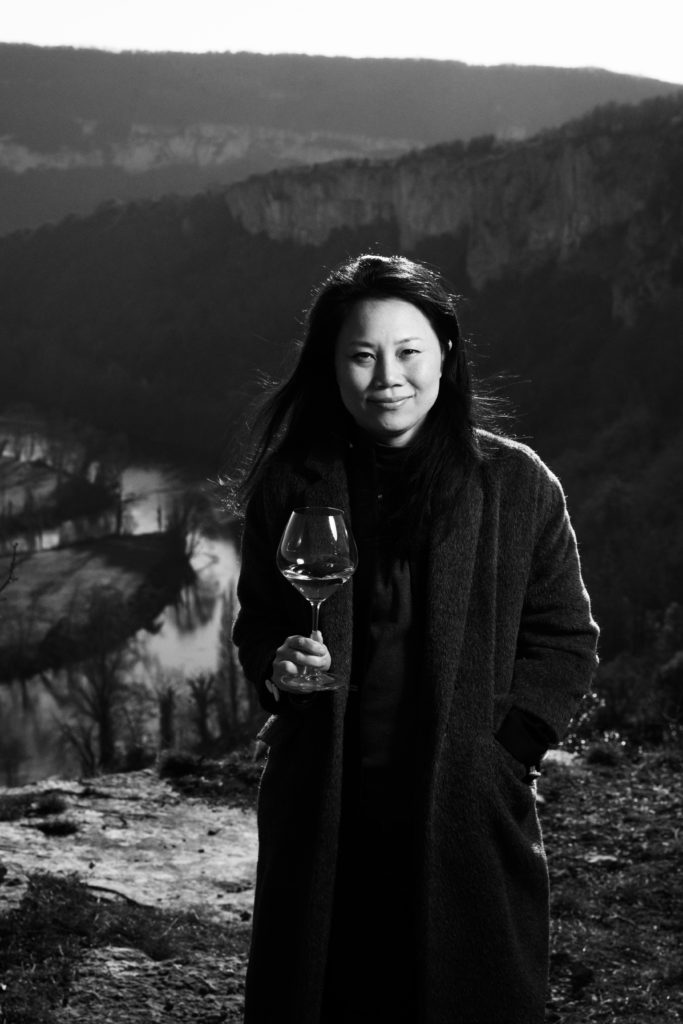
Lin Liu MW is the first female Chinese Master of Wine. She has lived in France since 2010 and began tasting Bordeaux En Primeur in 2013, beginning with the 2012 vintage. Liu has previously written for Bettane et Desseauve China, La Revue du vin de France China, Wine Magazine (China), Taste Spirit, Vinehoo and Conde Nast traveller. Liv-ex recently interviewed Liu to discuss her background, her thoughts on the Chinese wine market and the 2020 Bordeaux En Primeur.
Read in full, or jump straight to certain topics using the link below…
- Getting into the wine industry
- Becoming China’s first female Master of Wine
- The Chinese market and its influence on wine prices
- Wine production in China
- Successful brands in China
- Opportunities and challenges
- A view on Bordeaux 2020 vintage.
- Vintage comparison
- Other exciting regions
- Future plans
Can you tell us a bit about your background? How did you get into the wine industry?
I am originally from Hangzhou, China and lived there until I finished my degree in English Literature. I then worked in the Foreign Direct Investment segment (in Shanghai and Hong Kong) for about six years for many blue-chips companies. In 2005, I was looking for a change and got a full scholarship for an MBA course in Scotland and took the opportunity (partly because I had never been to Scotland!) After I earned my MBA degree, I worked for a Scotch whisky company for three years. I then moved to France and have been in the Cahors region since 2010.
The story of me falling into wine is not as romantic as it is for many passionate wine lovers. When I arrived in France, I barely spoke any French. I lived (and still do) in the countryside and knew almost nobody there. It could have been difficult to find work but my whisky clients in Taiwan and mainland China offered to buy wines from me. I knew nothing about what I was selling, so I started my WSET Level 3 course in 2011. I fell in love with wine while studying and have continued to study since then.
Congratulations on becoming China’s first female Master of Wine. What made you want to do this and how did you find the programme?
Because my French was so poor at the time, my best option to learn about wine was through the WSET. For a while, I thought the Master of Wine course was a master’s degree, then immediately realised my mistake when I started the Diploma course in Austria. When I was in Austria, I received immense help from my classmates, who made this experience extraordinary. Needless to say, I was the least knowledgeable student in the class, but my classmates helped me grasp the basic skills of blind tasting and many other things.
I look back on the MW programme itself with mixed feelings. It was so high pressured that everything else in life needed to be reprioritised, and this reprioritisation didn’t come naturally to me, but no regrets. It forced me to study subjects I would otherwise have chosen to ignore, which eventually gave me a more holistic view over many wine topics. Other than that, it is a somewhat self-revealing experience. Under pressure, I believe, that we manage to see our true self better. I also appreciate, wholeheartedly, the opportunity to meet many great people through the programme.
As our recent report highlighted, demand from China has influenced fine wine prices globally. How has the wine market in China changed over the years?
Until recently, China had shown a mixture of “importance” and “unimportance” as a wine market. With strong production, consumption and import figures, many people felt excited about the country’s potential. But if we read deeper, it is not difficult to see that China was irrelevant for most wines. The wine market in China was dominated by Chinese wines and lots of Bordeaux that cover the two extremes (the very expensive and the cheapest AOC Bordeaux).
This trend lasted for a very long time, until around 2012/2013, when there was the anti-corruption and anti-extravagance gifting movements from the Chinese government. As a result, many businesses, including wine companies, ended up with closure. The whole wine market then experienced a reshuffling, and wine businesses were forced to fight their way through, and they did so by embracing a more diversified portfolio.
This diversification created a solid basis for today’s market which has become increasingly diverse. It is also very important for long-term development of the wine market, and I anticipate that parts of China, such as Shanghai, will become mature markets soon. It does not take much imagination to see this trend expanding to other big cities as well. It is just a matter of time, and the Chinese market does evolve very fast.
The aforementioned Liv-ex report is available here.

Credit: Dave Yoder
Back in 2016, Liv-ex saw its first ever trade for a Chinese wine. How has China’s role as a wine-producing country changed over the years?
Chinese-produced wine has always occupied a significant position in China, regardless of volume or value, but segmentation and styles have gradually changed. Back in 2012, I recall asking my cousin, who co-owns a chain of popular restaurants in China, why he chose Chinese wine brands (Great Wall and the like) over some imported wines which would go better with his dishes and cost the same, if not less. His reply was that Chinese brands make his clients feel that they will not be ripped off.
To interpret his message: big Chinese brands are well established along when their pricing systems, which are solid and robust, and therefore represent better value for money. By contrast, an imported wine could sell for 1.5 to 10 times in China than it would in its country of origin, depending on the distribution channels.
What has changed in the past 10 years, however, is that luxury brands have invested heavily in China and helped shape its fine wine segment especially in wine-producing regions such as Ningxia and Yunnan (where Ao Yun is produced), which have recently emerged onto the international stage. There are also many Chinese-owned boutique wineries that have started to show their potential. A more diversified sector, including different pricing points, will develop further I believe.
Which wine brands do particularly well in China? Why do you think they are so successful?
It depends on the context, especially how we define “particularly well”. Let us look at brand awareness and distribution. Traditionally we have many Chinese wine brands, such as Changyu, Great Wall, Dynasty, Weilong etc., which were and still are very important in the market, even hit by imported wines in recent years. Then we also see international brands such as those from TWE’s portfolio and many top Bordeaux estates, which have done an amazing job in their branding. But they also had to make extensive effort with their distribution, which is not necessarily straightforward. Some Burgundy brands also work well in terms of their awareness among collectors, but the volume is usually quite limited and hardly scalable. If we make a generalised conclusion of their success, I think it comes down to creating demand in the market, whether this is due to scarcity or extraordinary quality, and meeting that demand by managing their pricing and distribution system effectively. The latter is more important by all means.
What do you think are the opportunities and challenges for China’s wine market going forward?
As mentioned earlier, the Chinese wine market is becoming more diverse. Existing figures are already remarkable, but China has yet to reach its full growth potential. Some international trends, such as natural wine, have certainly found their ground in a few metropolitan cities. At the same time, the majority of people still lack basic knowledge about wine, which is common for any new market. Sub-markets at different levels of development co-exist in parallel. Companies will therefore need to consider a high level of synergy between branding, marketing, distribution, and sales to reach their target markets.
One interesting new trend is food and wine pairing. With the launch of The Michelin Guide and Black Pearl Guide (the Chinese equivalent to The Michelin Guide) in China recently, many wines have been able to access a number of high-end Chinese restaurants, especially in the past 2 years. This is because one major criterion of being in these guides is for the restaurant to have a wine list. This isn’t to say that food and wine pairing will become “the” trend to watch, but it at least gives wine brands the opportunity to be listed and consumed in more high-end Chinese restaurants, where Chinese consumers go far more frequently than the Western ones.
To embrace these opportunities and market nuances, there are also some efforts to be made by the producers. Rather than just “educating” wine consumers, it is important that they learn and understanding the market particularities, as it helps wineries identify and communicate to the right type of clientele.
You recently published your report on the Bordeaux 2020 vintage. What are your overall thoughts on the vintage and did any producers or regions particularly stand out?
Some “grand” wines been produced, but it is not a great vintage for everybody. There are unfortunately ordinary wines, even from established names. On the Left Bank, we see the absence of homogeneity, making “generalising by sub-appellation” very difficult.
A few wines worth noting from the Left Bank (although not necessarily with the highest scores) are:Château Haut-Brion and Château La Mission Haut-Brion for both red and white, Château Latour, Château Haut-Bailly, Château Palmer, Château Montrose, Château Durfort-Vivens, Château Lynch-Bages, Château Pichon-Comtesse, Château Pichon Baron, Château Rauzan-Ségla, Cos d’Estounel, Château Clerc-Milon, and Domaine de Chevalier (both red and white),
On the Right Bank it is very satisfying overall. Pomerol and Saint-Émilion as appellations certainly stood out. It is exciting to taste many remarkable Right Bank wines from this vintage. My favourites include (although not necessarily with the highest scores):Château Lafleur, Château Pavie, Château Angélus, Château La Fleur-Pétrus, Vieux Château Certan, Tertre Roteboeuf, Pétrus, Château Nénin, Château Tour Saint-Christophe, Château La Conseillante, and Le Pin.
How does 2020 compare to other Bordeaux vintages?
To me, 2020 has its own characteristics due to the very particular weather conditions. The best wines can show perfect phenolic ripeness and incredible freshness at the same time, though poorly made ones could suffer from both over-ripe and unripe green characters. One interesting fact to note is that many of the better wines illustrate their long ageing potential, while showing great accessibility already at this young stage. It is quite rare.
What other regions are exciting you the most at the moment?
The list is long as I adore diversity. For work purposes, I would focus on those with higher relevance to the Chinese market. Aside from Bordeaux, therefore, the Rhône Valley and Burgundy would be on my “watch list” for the near future.
What are your plans for the future?
For the very short-term I will have my website (bi-lingual) up and running this summer. There will be branded wine tasting events to be organised accordingly (for 2022), partnering with some of the best professionals who are handling the local logistics. I will also be expanding my team.
Lin Liu MWs Bordeaux 2020 scores are now available to Liv-ex members on our website. For more information on membership, click here.





